Do you have a question about the Cisco Nexus 93180YC-FX3 and is the answer not in the manual?
Introduction to the Cisco Nexus 93180YC-FX3 switch, its features, and components.
Specifies the acceptable operating and non-operating temperature ranges for the switch.
Details the humidity levels the switch can withstand during operation and non-operation.
States the maximum altitude the switch can operate at, including specific values for China.
Provides precautions to avoid dust and particle contamination affecting switch performance.
Offers guidelines to reduce EMI and RFI interference from the switch for optimal operation.
Confirms the switch has been tested for shock and vibration for operating and handling.
Explains the importance of grounding the switch and how to establish an earth-ground connection.
Details the power supply configurations and requirements for the switch.
Describes airflow directions (intake/exhaust) and how to identify them by module coloring.
Lists the types of racks and cabinets compatible with the switch and their specifications.
Specifies the necessary space around the chassis for proper installation, airflow, and maintenance.
Provides critical safety instructions and warnings before installing, operating, or servicing the switch.
Details the different rack-mount kits available and how they facilitate switch installation.
Discusses how rack or cabinet selection impacts airflow and switch cooling.
Offers general guidelines for ensuring proper installation, grounding, and power connectivity.
Instructions for unpacking the switch, checking for damage, and preparing for installation.
Step-by-step guide for installing the switch using the NXK-ACC-KIT-1RU rack-mount kit.
Step-by-step guide for installing the switch using the N3K-C3064-ACC-KIT rack-mount kit.
Instructions for installing the airflow sleeve to ensure proper cooling and airflow management.
Detailed steps for grounding the switch chassis to ensure electrical safety.
Procedure for powering on the switch after installation and grounding.
Overview of the ACI fabric topology, including APICs, leaf, and spine switches.
Steps and considerations for gathering equipment and preparing to connect fabric devices.
Instructions for connecting Cisco Nexus 9300 ACI-mode leaf switches to APIC controllers.
Guidance on connecting leaf switches to every spine switch for optimal forwarding in the fabric.
Information on Fabric Extender (FEX) mode support and conversion for Nexus FX3 switches.
Procedure for installing a Gigabit Ethernet module (GEM) into the switch.
Steps for migrating from first-gen to second-gen Cisco Nexus 9000 series switches.
Instructions for setting up a console connection for initial switch configuration.
Guide for establishing an out-of-band management connection for monitoring and troubleshooting.
Best practices for maintaining transceivers and optical cables for signal accuracy and longevity.
Instructions for replacing a fan module while the switch is operating or powered off.
Guide for replacing AC or DC power supply modules to maintain switch operation.
Describes the types of cabinets and racks suitable for installing the Cisco Nexus switch.
Specifies the general requirements for cabinets and racks, including EIA standards.
Details requirements for mounting the chassis in an open rack, including spacing and clearance.
Lists requirements for perforated cabinets, focusing on perforation patterns and open area.
Provides guidelines for managing cables to ensure efficient routing and accessibility.
Details the environmental parameters including temperature, humidity, and altitude for the switch.
Provides the physical dimensions (width, depth, height) of the Cisco Nexus 93180YC-FX3 switch.
Lists the weight and quantity for the switch chassis and its various modules.
References for transceiver and cable specifications and compatibility information.
Details the typical and maximum power consumption requirements for the switch.
Provides detailed specifications for the 650-W AC, 1200-W HVAC/HVDC, and 930-W DC power supplies.
Lists available power cord part numbers and their descriptions for different locales.
Outlines the safety and EMC compliance standards that the switch adheres to.
Explains the BCN, STS, and ENV LEDs on the switch chassis, their colors, and status meanings.
Describes the LED indicators on the fan modules and their operational status.
Details the OK and FAIL/FAIL/ID LEDs on the power supply modules and their status meanings.
Lists the contents of the 1-RU rack-mount kit NXK-ACC-KIT-1RU.
Information about the N9K-AIRFLOW-SLV airflow sleeve and its compatibility.
Introduction to the Cisco Nexus 93180YC-FX3 switch, its features, and components.
Specifies the acceptable operating and non-operating temperature ranges for the switch.
Details the humidity levels the switch can withstand during operation and non-operation.
States the maximum altitude the switch can operate at, including specific values for China.
Provides precautions to avoid dust and particle contamination affecting switch performance.
Offers guidelines to reduce EMI and RFI interference from the switch for optimal operation.
Confirms the switch has been tested for shock and vibration for operating and handling.
Explains the importance of grounding the switch and how to establish an earth-ground connection.
Details the power supply configurations and requirements for the switch.
Describes airflow directions (intake/exhaust) and how to identify them by module coloring.
Lists the types of racks and cabinets compatible with the switch and their specifications.
Specifies the necessary space around the chassis for proper installation, airflow, and maintenance.
Provides critical safety instructions and warnings before installing, operating, or servicing the switch.
Details the different rack-mount kits available and how they facilitate switch installation.
Discusses how rack or cabinet selection impacts airflow and switch cooling.
Offers general guidelines for ensuring proper installation, grounding, and power connectivity.
Instructions for unpacking the switch, checking for damage, and preparing for installation.
Step-by-step guide for installing the switch using the NXK-ACC-KIT-1RU rack-mount kit.
Step-by-step guide for installing the switch using the N3K-C3064-ACC-KIT rack-mount kit.
Instructions for installing the airflow sleeve to ensure proper cooling and airflow management.
Detailed steps for grounding the switch chassis to ensure electrical safety.
Procedure for powering on the switch after installation and grounding.
Overview of the ACI fabric topology, including APICs, leaf, and spine switches.
Steps and considerations for gathering equipment and preparing to connect fabric devices.
Instructions for connecting Cisco Nexus 9300 ACI-mode leaf switches to APIC controllers.
Guidance on connecting leaf switches to every spine switch for optimal forwarding in the fabric.
Information on Fabric Extender (FEX) mode support and conversion for Nexus FX3 switches.
Procedure for installing a Gigabit Ethernet module (GEM) into the switch.
Steps for migrating from first-gen to second-gen Cisco Nexus 9000 series switches.
Instructions for setting up a console connection for initial switch configuration.
Guide for establishing an out-of-band management connection for monitoring and troubleshooting.
Best practices for maintaining transceivers and optical cables for signal accuracy and longevity.
Instructions for replacing a fan module while the switch is operating or powered off.
Guide for replacing AC or DC power supply modules to maintain switch operation.
Describes the types of cabinets and racks suitable for installing the Cisco Nexus switch.
Specifies the general requirements for cabinets and racks, including EIA standards.
Details requirements for mounting the chassis in an open rack, including spacing and clearance.
Lists requirements for perforated cabinets, focusing on perforation patterns and open area.
Provides guidelines for managing cables to ensure efficient routing and accessibility.
Details the environmental parameters including temperature, humidity, and altitude for the switch.
Provides the physical dimensions (width, depth, height) of the Cisco Nexus 93180YC-FX3 switch.
Lists the weight and quantity for the switch chassis and its various modules.
References for transceiver and cable specifications and compatibility information.
Details the typical and maximum power consumption requirements for the switch.
Provides detailed specifications for the 650-W AC, 1200-W HVAC/HVDC, and 930-W DC power supplies.
Lists available power cord part numbers and their descriptions for different locales.
Outlines the safety and EMC compliance standards that the switch adheres to.
Explains the BCN, STS, and ENV LEDs on the switch chassis, their colors, and status meanings.
Describes the LED indicators on the fan modules and their operational status.
Details the OK and FAIL/FAIL/ID LEDs on the power supply modules and their status meanings.
Lists the contents of the 1-RU rack-mount kit NXK-ACC-KIT-1RU.
Information about the N9K-AIRFLOW-SLV airflow sleeve and its compatibility.
| Product Name | Cisco Nexus 93180YC-FX3 |
|---|---|
| Category | Switch |
| Rack Units | 1 RU |
| Management | Cisco NX-OS |
| Jumbo Frame Support | Up to 9216 bytes |
| Memory | 16 GB |
| Storage | 64 GB SSD |
| AC Power Input | 100 to 240 VAC |
| Operating Temperature | 32°F to 104°F (0°C to 40°C) |
| Storage Temperature | -40°F to 158°F (-40°C to 70°C) |
| Product Series | Nexus 9000 |
| Ports | 48 x 10/25G SFP28, 6 x 40/100G QSFP28 |
| Power Supply | Dual redundant power supplies |
| MAC Address Table Size | 128, 000 |
| Routing Protocol | BGP, OSPF, ISIS, RIP |
| Features | VXLAN |
| Fans | Hot-swappable, variable speed |
| Power Consumption (Idle) | 150W |
| Humidity | 5% to 95% non-condensing |
| Compliance | RoHS |
| Dimensions (H x W x D) | 1.72 x 17.3 x 22.5 in (4.37 x 43.9 x 57.2 cm) |
| Weight | 24.2 lb (11 kg) |
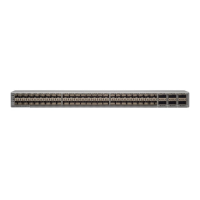
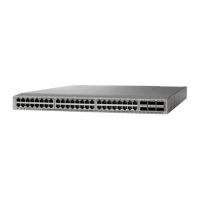



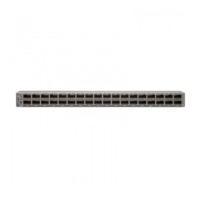
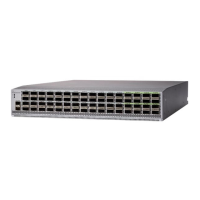


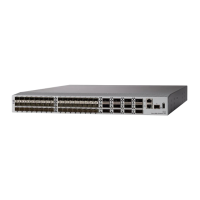
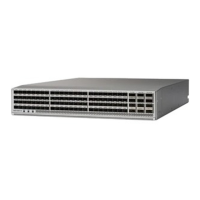
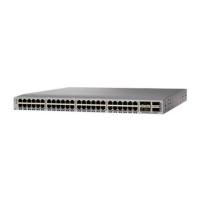
